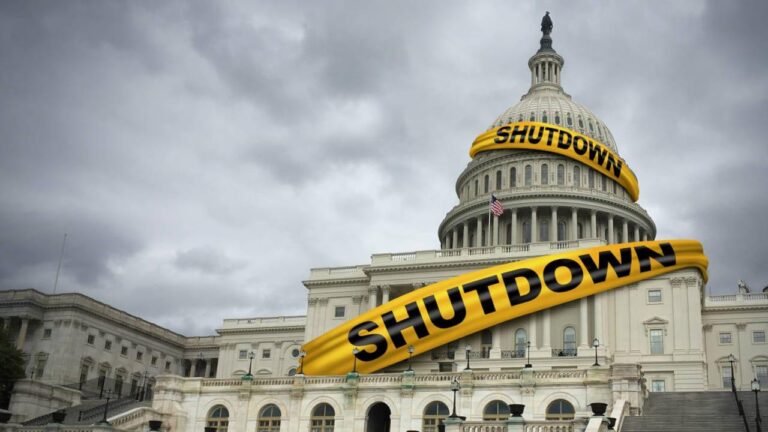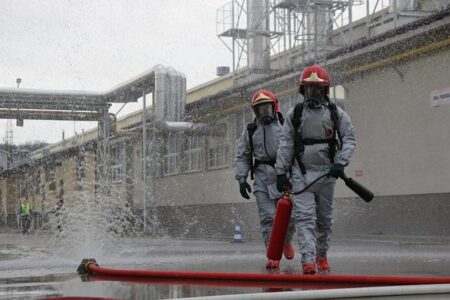Lawmakers have departed Washington with no resolution in sight for the ongoing government shutdown, deepening uncertainty and disruption across federal agencies. As negotiations stall amid partisan disagreements, critical government functions remain halted, affecting millions of Americans. This live update tracks the latest developments in the standoff, highlighting the political impasse and its wide-reaching consequences.
Government Shutdown Stalemate Deepens as Lawmakers Depart Capitol
As tension escalates in Washington, lawmakers have left the Capitol without reaching a resolution to the ongoing government shutdown, leaving critical services and federal employees in limbo. Negotiations have stalled over disagreements on budget allocations, with both parties holding firm on their demands. Key issues remain contentious, including funding for social programs, national security, and infrastructure projects. The absence of a bipartisan compromise extends the uncertainty for millions reliant on government functions.
Impact summary:
- Federal employees: Thousands face furloughs or unpaid work.
- Public services: Delays and reduced availability in agencies nationwide.
- Economic effects: Potential ripple effects on markets and public confidence.
| Key Issues | Party Stance | Repercussions |
|---|---|---|
| Budget Caps | Democratic push to raise spending limits | Risk of prolonged shutdown |
| Border Security | Republican demand for increased funding | Political deadlock |
| Social Programs | Opposing views on funding levels | Public uncertainty |
Impact on Federal Employees and Public Services Grows Uncertain
As the impasse in Washington drags on, federal employees face increasing uncertainty about their paychecks and job security. Thousands of government workers have been furloughed or are working without pay, forcing many to navigate financial strain while delivering critical services. The anxiety among these employees is palpable, with many unsure when normal operations will resume or if concessions will be made in the near future.
Public services, ranging from national park maintenance to social security processing, are experiencing significant disruptions. Key impacts include:
- Delayed processing of applications and permits
- Reduced staffing at essential agencies
- Closure of certain public facilities
Without swift legislative action, the effects on federal operations and the public relying on these services risk deepening over the coming weeks. Below is a snapshot of current furlough figures:
| Agency | Furloughed Employees | Essential Staff on Duty |
|---|---|---|
| National Park Service | 12,000 | 3,000 |
| Department of Homeland Security | 5,500 | 20,000 |
| Social Security Governance | 7,000 | 2,500 |
Analysis of Key Disagreements Preventing Resolution
At the core of the ongoing government shutdown lies a stark divide between lawmakers on fiscal priorities and policy provisions. Key disagreements revolve around funding allocations, with Republicans pushing for stringent spending cuts, especially in social programs, while Democrats demand increased investments in infrastructure and healthcare. This fundamental clash over budgetary values has stymied efforts to reach a consensus,as both sides refuse to compromise on critical agenda items.
Additionally, the debate over immigration policy continues to be a major sticking point. Republicans seek tougher border security measures, including enhanced funding for physical barriers and enforcement, whereas Democrats advocate for protections aimed at Dreamers and more humanitarian-based approaches.The gridlock is further complex by procedural disputes and party leadership dynamics, making any near-term resolution unlikely.
| Issue | Republican Position | Democratic Position |
|---|---|---|
| Spending Cuts | Significant reductions in social programs | Preserve or increase social program funding |
| Immigration | Border security enhancements | Protections for Dreamers |
| Healthcare | Limit government spending | Expand access and funding |
Strategies for Lawmakers to Break the Deadlock and Restore Operations
In the face of a government shutdown gridlock, lawmakers must pivot towards practical compromises to reignite stalled negotiations. Central to progress is a renewed commitment to prioritizing bipartisan dialog, where concessions on budget allocations and policy disagreements are met with mutual respect. Enhancing transparency in talks and maintaining open interaction channels can ease partisan tensions,allowing legislators to focus on the shared obligation of restoring government function.
Key strategies to break the deadlock include:
- Implementing phased funding bills to address immediate budget shortfalls
- Appointing a bipartisan negotiation committee to oversee compromise proposals
- Engaging external mediators to facilitate trust and collaboration between parties
- Involving stakeholder input to underscore the real-world impact of continued shutdowns
| Strategy | Potential Impact |
|---|---|
| Phased Funding Bills | Gradual reopening of government services |
| Bipartisan Negotiation Committee | Streamlined decision-making process |
| External Mediators | Reduced partisanship and impasse resolution |
| Stakeholder Engagement | Increased public pressure to compromise |
In Retrospect
As lawmakers remain at an impasse with no resolution to the government shutdown in sight, uncertainty continues to loom over federal operations and millions of Americans affected by the standoff.With no scheduled talks on the horizon,the protracted absence of a funding agreement raises questions about the political and economic repercussions in the days ahead. CNN Politics will continue to monitor developments closely and provide live updates as the situation evolves.




